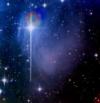

| Visitors Now: | |
| Total Visits: | |
| Total Stories: |

| Story Views | |
| Now: | |
| Last Hour: | |
| Last 24 Hours: | |
| Total: | |
Rainwater Across US Contaminated with low-levels Nuclear Radiation … EYE Report

 Trace amounts of radioactive iodine linked to Japan's crippled nuclear power station have turned up in rainwater samples as far away as Massachusetts during the past week.
Trace amounts of radioactive iodine linked to Japan's crippled nuclear power station have turned up in rainwater samples as far away as Massachusetts during the past week.
By Daily Mail Reporter
Last updated at 1:50 PM on 28th March 2011
The low level of radioiodine-131 detected in precipitation at a sample location in Massachusetts is comparable to findings in California, Washington state and Pennsylvania.
Public health officials said it poses no threat to drinking supplies.

Warning system: Six of the Environmental Protection Agency's 12 California sensors are sending data with 'anomalies' to the laboratory that tests levels
Air samples from the same location in Massachusetts have shown no detectable radiation.
The news comes as flaws in the US government’s radiation alert network have left a stretch of coastline between Los Angeles and San Francisco without a key real-time warning system in the event of a nuclear emergency.
A time lag of between 30 minutes and several hours could leave West Coast residents at risk from deadly radiation.
Six of the Environmental Protection Agency’s 12 California sensors are sending data with ‘anomalies’ to the laboratory in Montgomery, Alabama, that tests radiation levels, said Mike Bandrowski, manager of the EPA’s radiation programme.
The problem is some of the suspect information arriving at the lab via satellite has to be manually reviewed, a process that can take up to several hours.

Network: A map from the EPA shows the fixed monitoring systems set up to detect radiation levels across the U.S
The delay in updating a database to trigger the alarm could mean it could sound too late to give anyone any time to react to the potential danger, environmentalists said.
Rainwater samples are being collected from more than 100 sites around the country that are part of the U.S. Environmental Protection Agency's Radiation Network monitoring system.
'The drinking water supply in Massachusetts is unaffected by this short-term, slight elevation in radiation,' said Massachusetts Public Health Commissioner John Auerbach.
'We will carefully monitor the drinking water as we exercise an abundance of caution,' he said.

Danger? Three of the problematic sensors are close to the Diablo Canyon nuclear power plant near San Luis Obispo in California
Energy and Environmental Affairs Secretary Richard K. Sullivan Jr. directed the Department of Environmental Protection to collect additional samples for testing from several water bodies across Massachusetts. Results will be available over the next several days.
At concentrations found, the radioiodine-131 would likely become undetectable in a 'relative short time,' according to a statement issued by agency.
Trace amounts of radiation believed to have originated from damaged Fukushima Daiichi reactors in the aftermath of Japan's devastating 9.0 earthquake on March 11 have also been detected in air samples in several western U.S. states, but at levels so small they posed no risk to human health.

Smoke rises from Fukushima Daiichi nuclear power complex two days after the Japan earthquake. Trace amounts of radioactive iodine linked to the plant have been traced in rainwater in America
In Japan, mounting problems, including miscalculated radiation figures and inadequate storage tanks for huge amounts of contaminated water, stymied emergency workers Sunday as they struggled to bring the country's nuclear complex back from the edge of disaster.
Workers were trying to remove radioactive water from the nuclear compound and restart the regular cooling systems for the dangerously hot fuel.


